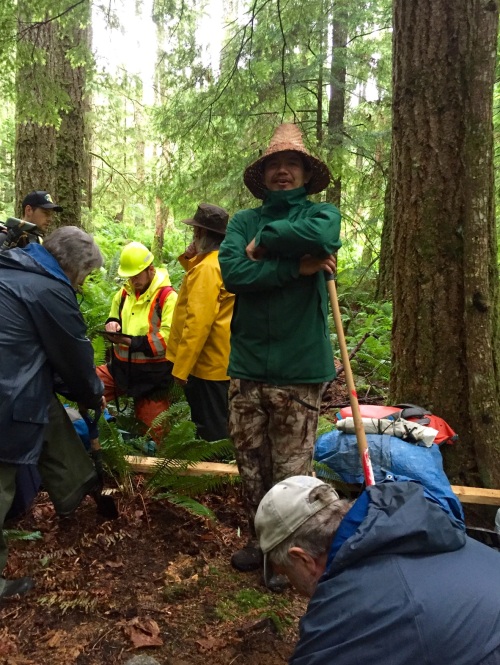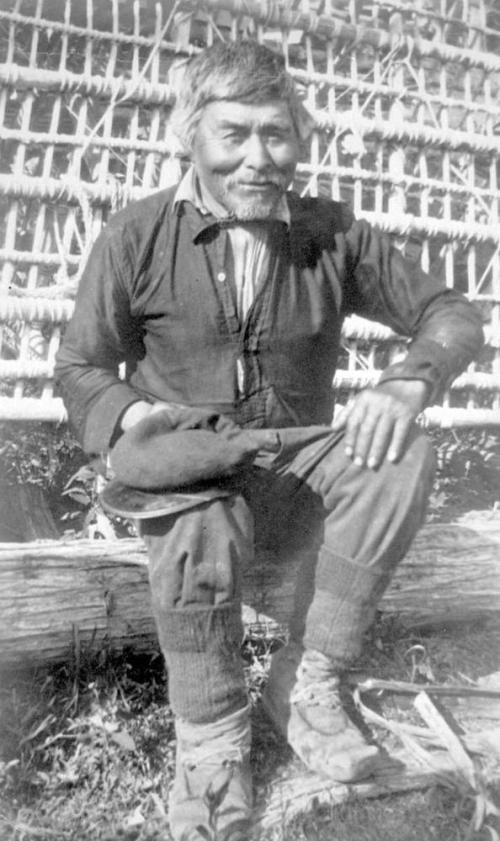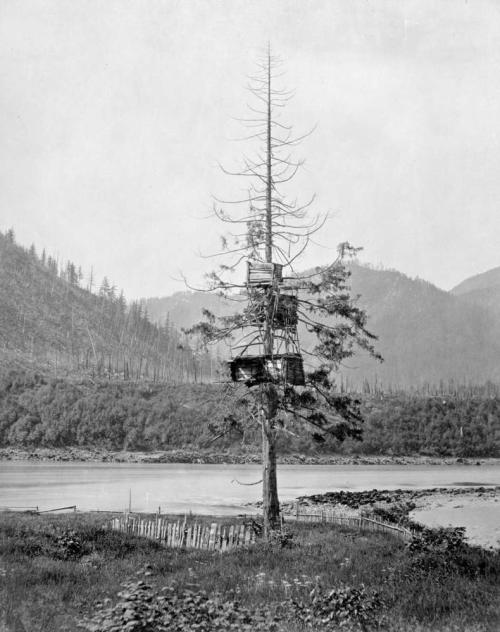
Stone wall fishing structure being used near Hagwilget, LowerBulkley River just upstream of confluence with Skeena River at ‘Ksan and Gitanmaax, Wet’suwet’en Territory, ca. 1910. Source: BC Archives https://goo.gl/EKKB2S
This post is just a random collection of lesser-known historic images of fish weirs and traps from the Northwest Coast and Interior. There’s lots to learn for archaeologists from historic pictures generally, but the way that images circulate and are reproduced means we often see the same ones over and over again. I’ve found a few archival pics which may be familiar to some, but possibly novel to many.
For example, the picture above shows a surprisingly large (to me) stone weir near Hagwilget Canyon, which is a major fishing station on the Bulkley River. I think it must be in the large kidney-shaped pool just downstream of the bridge (map). While the main structure may be partially or wholly a natural cobble bar feature, to the left there is a smaller weir that definitely appears cultural. Note the drying structures and smoke houses in the background, detail below.
We discussed Hagwilget once before when looking at the incredible bridge which used to span the river. At that time I complained about copyright claims, and my opinion still holds when it comes to material digitized by public agencies. Anyway, the successor to the original Hagwilget bridge bridge was not much more reassuring, and even the present day bridge is pretty hairy for the faint of butt. Continue reading →












